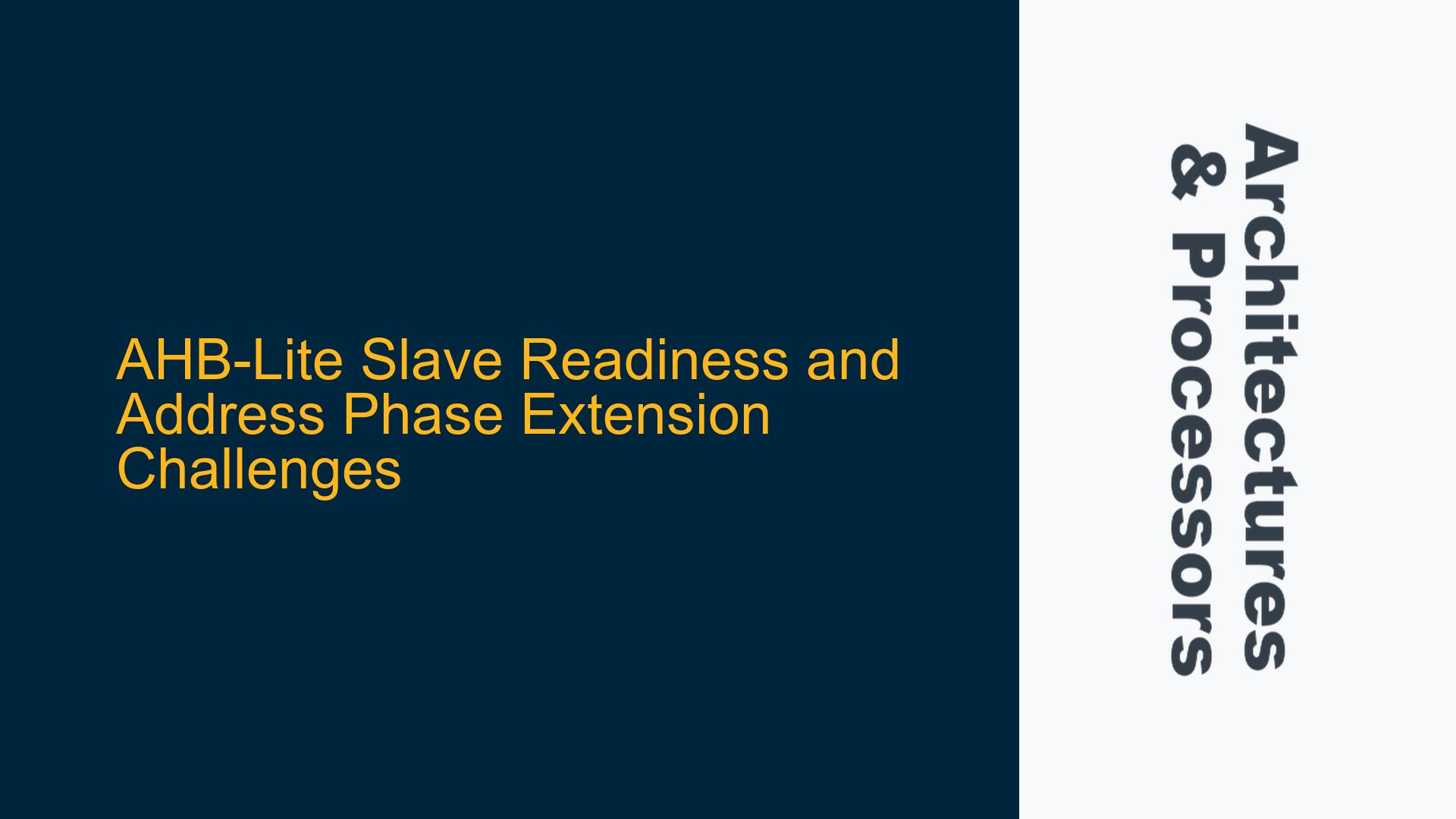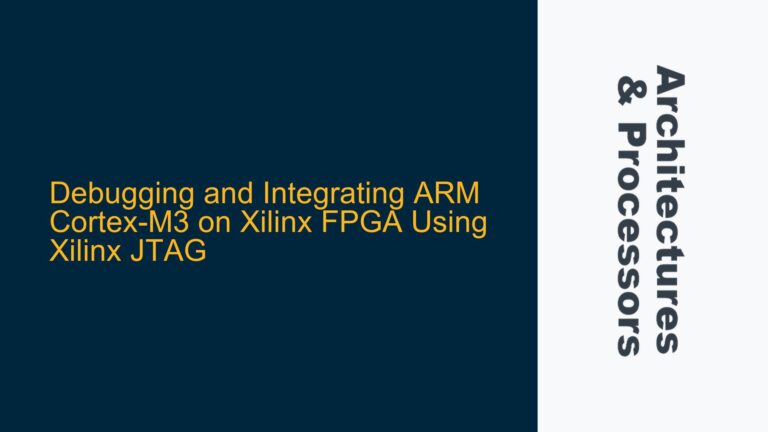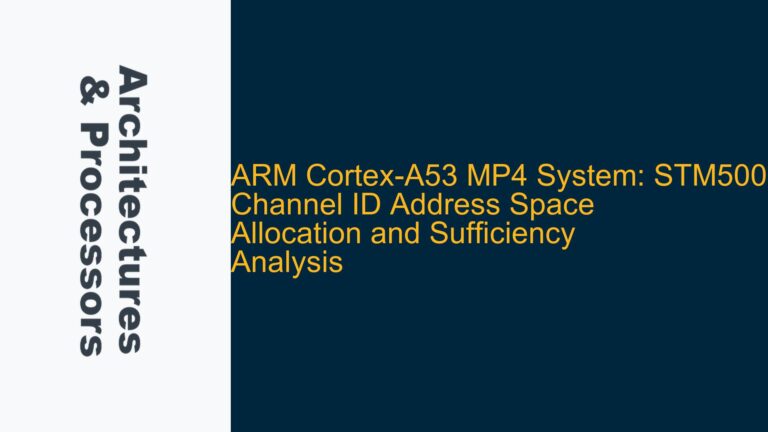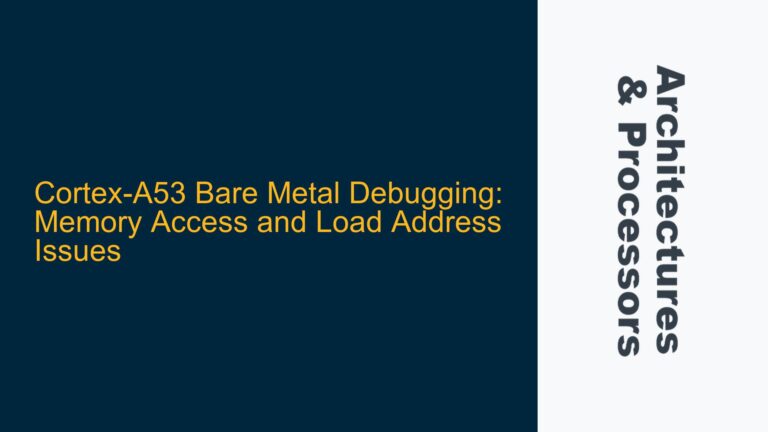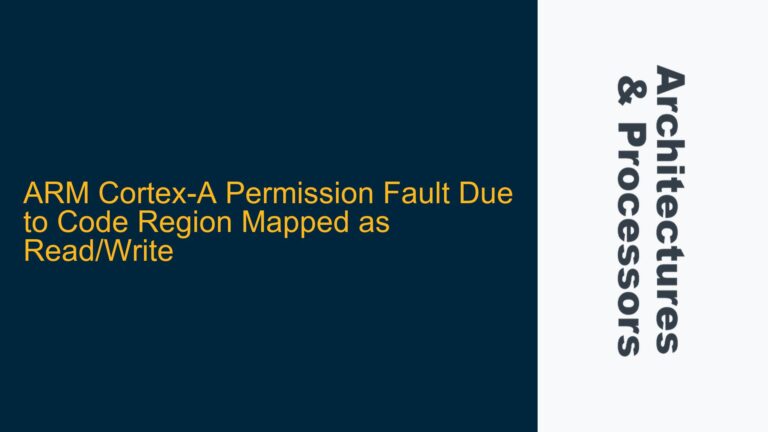AHB-Lite Slave Initialization and Address Phase Constraints
The AHB-Lite protocol, a subset of the Advanced Microcontroller Bus Architecture (AMBA) family, is widely used in ARM-based SoC designs for its simplicity and efficiency in handling data transfers between masters and slaves. However, one of the key challenges in AHB-Lite implementations is ensuring that slaves are always ready to accept new transactions during the address phase. Unlike the data phase, where slaves can signal wait states by driving HREADY low, the address phase does not provide a mechanism for slaves to indicate unreadiness. This limitation becomes particularly critical during system initialization, where certain slaves may require additional time to become operational after a reset.
In AHB-Lite, the address phase is a single-cycle operation where the master drives the address (HADDR), control signals (HSIZE, HTRANS, etc.), and the write data (HWDATA) if applicable. The slave is expected to sample these signals and prepare for the subsequent data phase. The protocol mandates that slaves must always be ready to accept new address phases, regardless of their internal state. This requirement can lead to complications when a slave is not yet ready to process transactions, such as during the post-reset initialization period.
The core issue arises from the fact that the AHB-Lite protocol does not allow slaves to extend the address phase. While HREADY can be used to extend the data phase, it has no effect on the address phase. This means that if a slave is not ready to accept a new transaction during the address phase, it cannot signal the master to delay the transaction. This limitation can cause system-level issues, especially when certain slaves require significant initialization time after reset.
Slave Initialization Timing and HREADY Signal Management
The primary cause of the address phase readiness issue lies in the AHB-Lite protocol’s design, which prioritizes simplicity and efficiency over flexibility. The protocol assumes that slaves are always ready to accept new transactions during the address phase, and any delays are handled during the data phase using the HREADY signal. However, this assumption does not account for scenarios where a slave may need additional time to initialize or perform internal operations before it can process transactions.
One common scenario is when a slave device, such as a memory controller or peripheral, requires a significant amount of time to initialize after a reset. During this initialization period, the slave may not be able to process transactions, but the AHB-Lite protocol does not provide a mechanism for the slave to signal its unreadiness during the address phase. As a result, the master may issue transactions to the slave before it is ready, leading to potential data corruption or system instability.
Another contributing factor is the behavior of the HREADY signal. In AHB-Lite, HREADY is used to indicate whether the slave is ready to complete the current data phase. When HREADY is driven low, the data phase is extended, and the master must wait until HREADY is driven high before proceeding. However, HREADY has no effect on the address phase, meaning that the master can continue to issue new transactions even if the slave is not ready to process them.
This behavior can lead to a situation where the master issues a transaction to a slave that is still initializing, and the slave is unable to process the transaction correctly. In such cases, the slave may return an error response, or the transaction may fail silently, leading to undefined behavior in the system.
Implementing Workarounds for Slave Initialization and Error Handling
Given the constraints of the AHB-Lite protocol, there are several strategies that can be employed to address the issue of slave initialization and address phase readiness. These strategies involve both hardware and software solutions, and they aim to ensure that the system operates correctly even when certain slaves require additional time to initialize.
Delaying Master Transactions Post-Reset
One approach is to delay the issuance of transactions to the slave until it has completed its initialization. This can be achieved by implementing a timer or counter in the master that waits for a predetermined amount of time after reset before issuing transactions to the slave. This approach ensures that the slave has sufficient time to initialize before any transactions are issued, reducing the risk of errors or system instability.
For example, if a slave requires 10 milliseconds to initialize after reset, the master can be programmed to wait for at least 10 milliseconds before issuing any transactions to that slave. This delay can be implemented in hardware using a counter or in software using a timer interrupt. While this approach is simple and effective, it may not be suitable for all systems, especially those with strict timing requirements or where the initialization time of the slave is variable.
Using Error Responses for Unready Slaves
Another approach is to design the slave to return an error response if it is accessed during its initialization period. In AHB-Lite, slaves can signal an error by driving HRESP high during the data phase. When the master receives an error response, it can take appropriate action, such as retrying the transaction later or aborting the operation.
For example, if a slave is accessed before it has completed its initialization, it can return an error response to indicate that it is not ready to process the transaction. The master can then retry the transaction after a delay, giving the slave additional time to initialize. This approach allows the system to handle slave initialization gracefully, without requiring changes to the AHB-Lite protocol or the master’s behavior.
However, this approach requires careful design of the slave’s error handling logic, as well as coordination between the master and slave to ensure that the master retries the transaction at the appropriate time. Additionally, the master must be able to handle error responses correctly, which may require modifications to the master’s firmware or software.
Implementing Multi-Layer AHB Bus Architectures
In systems where multiple slaves require significant initialization time, a multi-layer AHB bus architecture can be used to improve system performance and flexibility. In a multi-layer AHB bus, multiple AHB buses are connected through a bus matrix, allowing multiple masters to access different slaves simultaneously. This architecture can be used to isolate slaves that require initialization time from the rest of the system, reducing the impact of their initialization on overall system performance.
For example, a system with two AHB buses can be designed such that one bus is used for high-priority transactions, while the other bus is used for low-priority transactions, including those to slaves that require initialization time. This approach allows the high-priority bus to operate without being affected by the initialization of slaves on the low-priority bus, improving overall system performance.
Leveraging Interrupts for Slave Readiness Notification
In some cases, it may be possible to use interrupts to notify the master when a slave has completed its initialization and is ready to process transactions. This approach involves designing the slave to generate an interrupt when it has completed its initialization, allowing the master to delay transactions until the interrupt is received.
For example, a slave that requires initialization time can be designed to generate an interrupt when it is ready to process transactions. The master can then wait for this interrupt before issuing any transactions to the slave, ensuring that the slave is ready to process the transactions correctly. This approach requires coordination between the master and slave, as well as careful design of the interrupt handling logic, but it can provide a flexible and efficient solution to the problem of slave initialization.
Conclusion
The AHB-Lite protocol’s requirement that slaves must always be ready to accept new transactions during the address phase can pose significant challenges in systems where certain slaves require additional time to initialize or perform internal operations. However, by implementing appropriate workarounds, such as delaying master transactions, using error responses, leveraging multi-layer AHB bus architectures, or using interrupts for slave readiness notification, it is possible to ensure that the system operates correctly even when slaves are not immediately ready to process transactions.
These solutions require careful design and coordination between the master and slave, as well as a thorough understanding of the AHB-Lite protocol and its limitations. By addressing the issue of slave initialization and address phase readiness, designers can create robust and reliable ARM-based SoCs that meet the performance and functionality requirements of their target applications.
